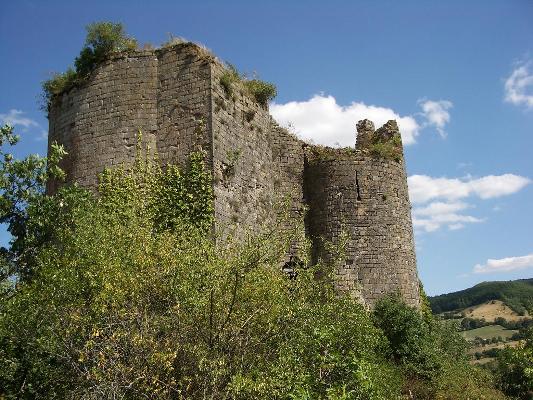
July 17, 2013, by Harry Cocks
The Cathar Heresy: Fact or Fiction?
In the 11th century, the Western Christian church began to act against “popular” heresy, that is to say, dissident religious movements involving people at many social levels. By the mid-13th century in France this effort had solidified into the series of courts and inquiries known as “inquisitions ” (medievalists no longer call this collection of different inquiries “the inquisition”). To begin with, these efforts to extirpate religious dissent were directed particularly against the Cathar heresy, usually held to have existed between the 12th and 14th centuries (the picture above shows the castle of Penne D’Albigeoise near Albi, built to help crush this movement [© Claire Taylor]). Catharism was a form of dualist belief which held that there were two gods: one good, who created souls and other “invisible things,” and one evil, who had made the material world and the body, in which he imprisoned human souls. Historians initially accepted that the work of inquisitions to extirpate heresy was a response to the rise of reforming tendencies which aimed to return the church to simpler style of Christianity. However, in recent years the medievalist R. I. Moore has turned this account on its head, arguing that instead of being a direct response to the rise of reform movements, this “war on heresy” was a form of empire-building on the part of new secular bureaucracies. In that sense, Moore says, heresies like Catharism existed more in the minds of Church officials than in actual fact. Because reformers like the Cathars challenged the authority of these new bureaucracies, all manner of doctrinal and moral crimes were attributed to them by their inquisitors, possibly bearing little relationship to what they actually believed and practiced. However, in a new article for the journal History (see link below) Claire Taylor, Associate Professor in Nottingham’s History department, argues that a living Catharism was actually discovered by ecclesiastical inquiries. Dr Taylor says that the surviving testimony of witnesses who gave evidence to inquisitors in southern France in the 1240s shows that key Christian beliefs were in fact challenged by “heretics.” These men and women attacked orthodox doctrines such as the belief in one God, the idea that the World was God’s creation, and the incarnation of Christ. Neither were these beliefs simply imposed on the written record by inquisitors. Instead we should see three competing religious systems operating in this area : the official religion of Catholicism, plus what historians have come to call “Catharism”, and “Waldensianism,” the latter an altogether different heresy. Far from inquisitors conjuring heretics out of their imaginations, the nature of the evidence demonstrates that “Catharism” was real, and that its doctrine was directly opposed to the official view of the church.
Claire Taylor, “Evidence for dualism in inquisitorial registers of the 1240s: a contribution to a debate,” History 98 ,331 (2013), 319-345
http://onlinelibrary.wiley.com/doi/10.1111/1468-229X.12011/full
No comments yet, fill out a comment to be the first

Leave a Reply